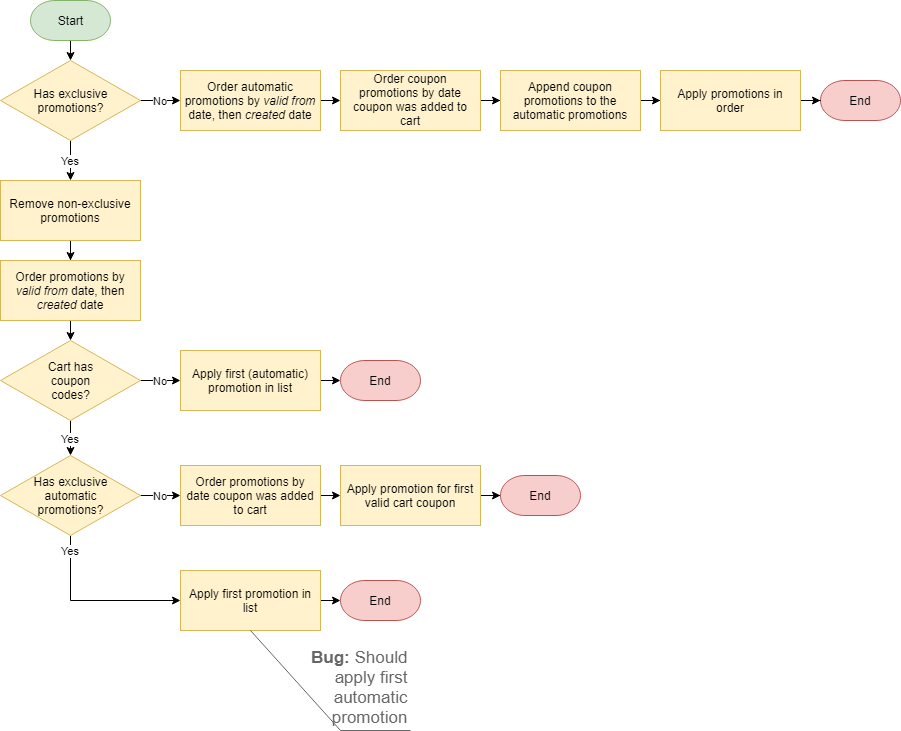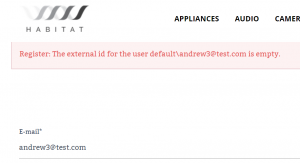In this article, we will review the default business logic that the Commerce Engine utilises to evaluate and apply promotions.
Introduction
Before we get into the details around promotions, there are a few things we need to understand.
-
- Promotions are separated into cart line level and cart level promotions, determined by the promotion benefits configured to each promotion. While multiple benefits can be added to promotions, additional benefits after the first can only be of the same benefit type.
- Cart line calculations (subtotals, fulfillment fees, promotion discounts, taxes, totals) are evaluated and applied prior to the and cart calculations.
Sitecore.Commerce.Plugin.Carts ICalculateCartLinesPipeline (Sitecore.Commerce.Plugin.Carts.Cart => Sitecore.Commerce.Plugin.Carts.Cart) ------------------------------------------------------------ Plugin.Carts.ClearCartLinesBlock (Sitecore.Commerce.Plugin.Carts.Cart => Sitecore.Commerce.Plugin.Carts.Cart) ------------------------------------------------------------ Plugin.Carts.ClearCartBlock (Sitecore.Commerce.Plugin.Carts.Cart => Sitecore.Commerce.Plugin.Carts.Cart) ------------------------------------------------------------ Plugin.Carts.CalculateCartLinesSubTotalsBlock (Sitecore.Commerce.Plugin.Carts.Cart => Sitecore.Commerce.Plugin.Carts.Cart) ------------------------------------------------------------ Plugin.Fulfillment.CalculateCartLinesFulfillmentBlock (Sitecore.Commerce.Plugin.Carts.Cart => Sitecore.Commerce.Plugin.Carts.Cart) ------------------------------------------------------------ Plugin.Promotions.CalculateCartLinesPromotionsBlock (Sitecore.Commerce.Plugin.Carts.Cart => Sitecore.Commerce.Plugin.Carts.Cart) ------------------------------------------------------------ Plugin.Tax.CalculateCartLinesTaxBlock (Sitecore.Commerce.Plugin.Carts.Cart => Sitecore.Commerce.Plugin.Carts.Cart) ------------------------------------------------------------ Plugin.Carts.CalculateCartLinesTotalsBlock (Sitecore.Commerce.Plugin.Carts.Cart => Sitecore.Commerce.Plugin.Carts.Cart) ----------------------------------------------------------------- Sitecore.Commerce.Plugin.Carts ICalculateCartPipeline (Sitecore.Commerce.Plugin.Carts.Cart => Sitecore.Commerce.Plugin.Carts.Cart) ------------------------------------------------------------ Plugin.Carts.CalculateCartSubTotalsBlock (Sitecore.Commerce.Plugin.Carts.Cart => Sitecore.Commerce.Plugin.Carts.Cart) ------------------------------------------------------------ Plugin.Fulfillment.CalculateCartFulfillmentBlock (Sitecore.Commerce.Plugin.Carts.Cart => Sitecore.Commerce.Plugin.Carts.Cart) ------------------------------------------------------------ Plugin.Promotions.CalculateCartPromotionsBlock (Sitecore.Commerce.Plugin.Carts.Cart => Sitecore.Commerce.Plugin.Carts.Cart) ------------------------------------------------------------ Plugin.Tax.CalculateCartTaxBlock (Sitecore.Commerce.Plugin.Carts.Cart => Sitecore.Commerce.Plugin.Carts.Cart) ------------------------------------------------------------ Plugin.Carts.CalculateCartTotalsBlock (Sitecore.Commerce.Plugin.Carts.Cart => Sitecore.Commerce.Plugin.Carts.Cart) ------------------------------------------------------------ Plugin.Payments.CalculateCartPaymentsBlock (Sitecore.Commerce.Plugin.Carts.Cart => Sitecore.Commerce.Plugin.Carts.Cart) ------------------------------------------------------------ Plugin.Carts.WriteCartTotalsToContextBlock (Sitecore.Commerce.Plugin.Carts.Cart => Sitecore.Commerce.Plugin.Carts.Cart) - Exclusive promotions apply against the benefit type only, therefore it is possible to apply a cart line level exclusive promotion and a cart level exclusive promotion at the same time.
Evaluating Promotions
The following diagram shows the pipelines and pipeline blocks that are called during the process of evaluating the applicable promotions and additional filtering for exclusive promotion evaluation.

There are essentially 10 steps that make up the evaluation process:
- Search For Promotions: Retrieves all promotions.
- Filter Promotions By Valid Date: Removes promotions that do not fall within the Valid From/To dates based on effective date.
- Filter Not Approved Promotions: Removes promotions that are not approved and, if the promotion is disabled, where the effective date is prior to the updated date (the date the promotion was disabled). The latter rule is to allow the promotion to be active when reviewed the storefront at a previous point in time.
Note: From 9.0.1, the GlobalPromotionsPolicy was introduced to allow promotions to be previewed in the storefront prior to submitting a promotion for approval.
- Filter Promotions By Items: Removes promotions where the cart contains no sellable items marked as included in the ItemsCollection qualification or where the cart contains any of the sellable items marked as excluded in the ItemsCollection qualification.
- Filter Promotions By Book Associated Catalogs: Removes promotions where the catalog, associated to its promotion book, does not match any of the catalogs associated to the sellable items of the cart lines.
- Filter Promotions By Benefit Type: Removes promotions where the type of benefits configured to the promotion does not match the benefit type being evaluated. i.e. Cart line level benefits (CartLineActions) and cart level benefits (CartActions) for CalculateCartLinesPipeline and CalculateCartLinesPipeline respectively.
- Filter Promotions By Coupon: Removes promotions that require a coupon that has not been applied to the cart.
- Evaluate Promotions: Filters out promotions where promotion qualifications and benefit rules do are not applicable to the current cart.
- Filter Promotions With Coupons By Exclusivity: If exclusive coupon promotions are present in the promotions list, the list will be filtered down to a single exclusive coupon promotion. The promotion will be determined by the Added date that their corresponding coupons were applied to the cart.
- Filter Promotions By Exclusivity: If exclusive automatic promotions are present in the promotions list, the list will be filtered down to a single exclusive automatic promotion. The promotion will be determined by the earliest (oldest) Valid From date, and in the event of multiple promotions sharing the same earliest Valid From date the promotion that was created earliest will take win.
Promotion Priorisation Rules
While the previous section covered how promotions are evaluated, and also provided some insight into promotion priorisation, we will now cover the prioritisation rules.
The following diagram shows the logic used to determine which promotion(s) to apply to the cart.

There are essentially 3 steps that make up the application process:
- Apply a single exclusive automatic promotion.
- The promotion will be determined by the earliest (oldest) Valid From date, and in the event of multiple promotions sharing the same earliest Valid From date the promotion that was created earliest will take win.
- If a promotion is applied here no further promotions are applied.
- Apply a single exclusive coupon promotion.
- The promotion will be determined by the Added date that their corresponding coupons were applied to the cart.
- If a promotion is applied here no further promotions are applied.
- Apply all non-exclusive promotions.
- The promotion order will be determined by:
- Automatic promotions ordered by earliest (oldest) Valid From date, and in the event of multiple promotions sharing the same earliest Valid From date the promotion that was created earliest will take win.
- Coupon Promotions ordered by earliest Added date that their corresponding coupons were applied to the cart.
- The promotion order will be determined by:




